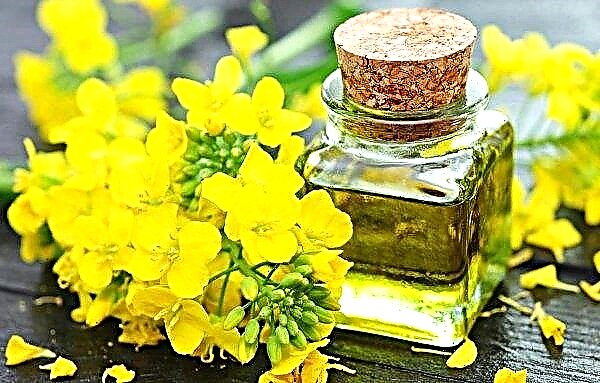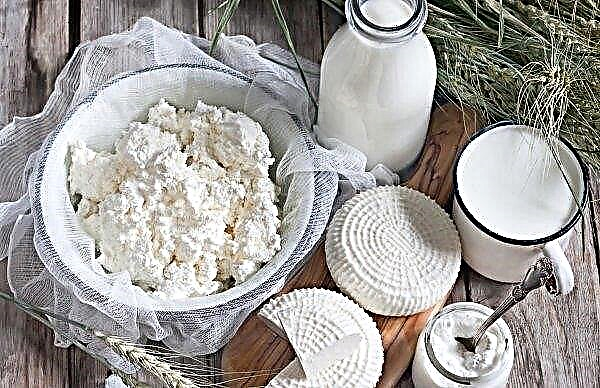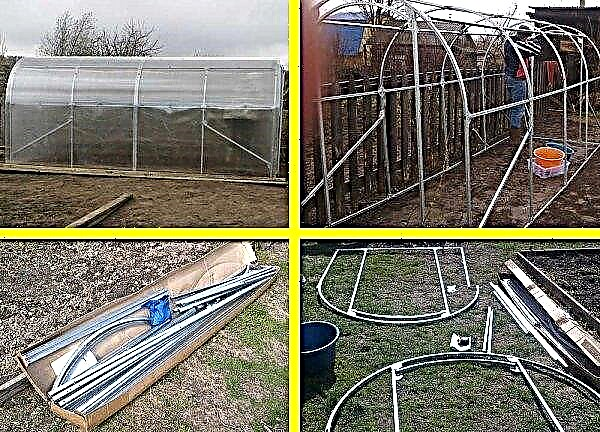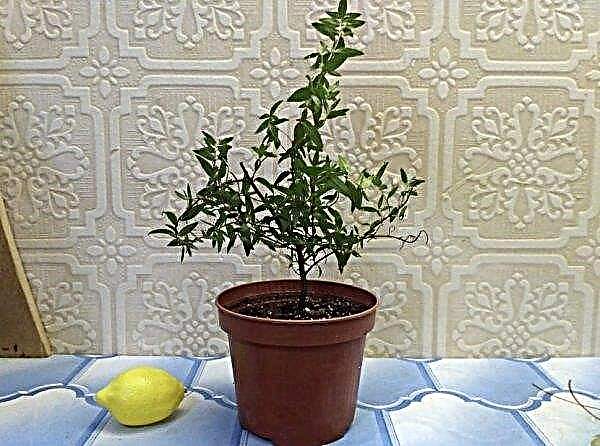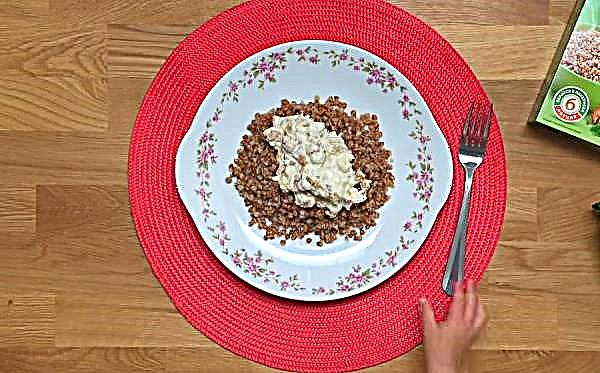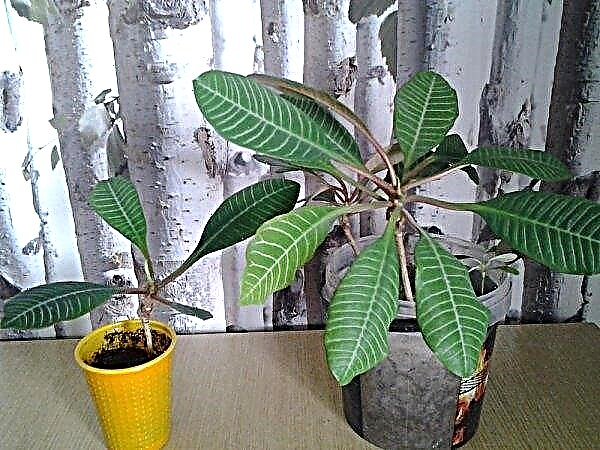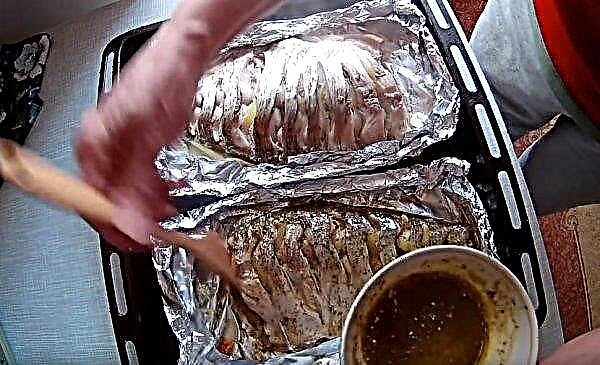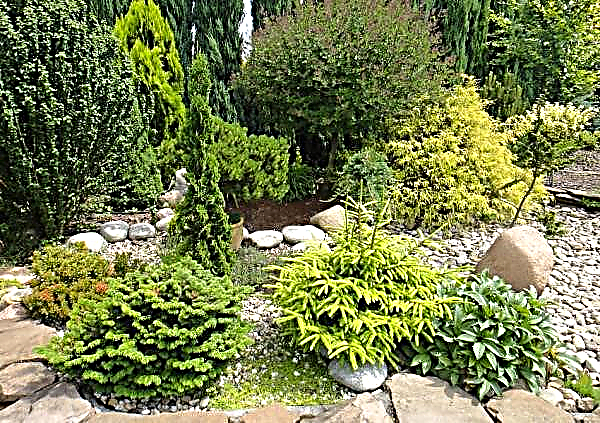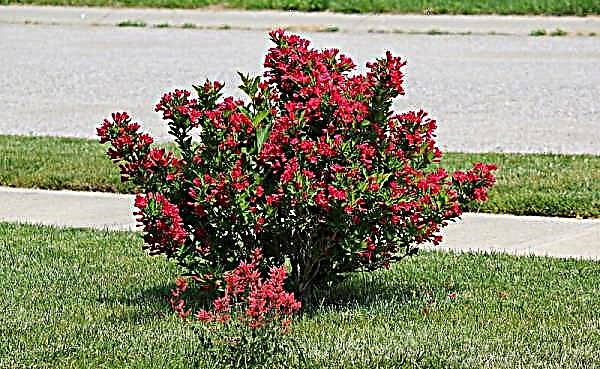Dracaena Deremskaya was brought to our region from the tropics. This plant is for many reasons common among flowerpot lovers. To properly care for this plant, you need to understand the basic subtleties of its cultivation and maintenance.
Description of dracaena Deremskaya
Dracaena Derema comes from the tropical and subtropical zones of Africa and Asia. Externally, the plant looks like a palm tree with an extensive deciduous part on a straight trunk, the height of which is up to 1.5 m. The leaves of dracaena are long and narrow, leathery and stiff in structure, wider at the base and reduced to a tip. The color of the foliage is dark green, with light streaks running parallel from the base to the end of the leaf.
Did you know? Dracaena as a genus in various sources is attributed to the Agave or Iglitsov family (other researchers distinguish it as a separate species of the Dracenovs). According to the taxonomic system APG III, this plant should be referred to as Asparagus.
If the plant is young, its green part is raised up. Dracaena, which is already more than 5 years old (and she lives up to 15), can be determined by the dropped leaves. Inflorescences of the plant are located in the sinuses. Flowers are distinguished by a white color in the inside and a dark shade of red on the outside. Orange fruits similar to medium-sized berries are also formed.
Useful properties of the plant
This shrubby variety not only decorates the home, but also has a beneficial effect on the indoor microclimate. So, dracaena Deremskaya, like other species, cleans the air of harmful substances. It's no secret that the usual synthetic materials for particleboard or linoleum emit dangerous gaseous chemical elements in the form of evaporation. After placing a flowerpot with dracaena in the room, only 30% remains in the air of these substances.
Changes in the health status of residents of the house where there is a palm tree, and office workers will not be unnoticed. So, it is able to neutralize formaldehyde and trichlorethylene, which is emitted in the room by technicians (computers, televisions). Psychologists say that the plant has a good effect on emotionally unstable, depressed people.
Did you know? Leaves of dracaena can be coated with liquid wax to give them a glossy look.
The basic rules of growing
Growing dracaena Deremskaya consists in strict observance of the following rules:
- the plant needs the right microclimate;
- the flowerpot should be protected from sharp winds and bright sunlight;
- palm tree as an inhabitant of the tropics needs timely watering and spraying of foliage;
- it is important to fertilize, cut and transplant it in time, as this ensures active growth;
- To ensure a healthy life, you need to identify the symptoms of possible diseases on time and treat the plant.

Growing and caring at home
To dracaena when grown at home had a beautiful and healthy appearance, they speak of competent cultivation, which means providing a special microclimate, watering and feeding, as well as timely pruning and transplanting.
Conditions of detention
An integral part of the conditions of the plant is the temperature regime. Since dracaena came to us from places with a hot climate, to continue living, it needs a temperature of +20 ... + 26 ° С. When its level drops to + 18 ° С (which is considered acceptable for the frosty season), growth slows down or stops completely.
Important! If the temperature drops to + 12 ° C, the plant does not withstand the cold and dies.
Both the lack of lighting and exposure to direct sunlight can be detrimental to the plant. For this reason, the flowerpot should be placed in a place where there is a lot of diffused light. If there is not enough daylight in the winter, the use of special lighting devices is welcome. Humidity should be maintained within 70-75%. The soil should not be moist all the time, it is important to let it reach the level of visible drying.
Fertilizers and irrigation
As a fertilizer, liquid consistency products, which can be purchased in specialized stores, are excellent. Dracaena Dracaena is fed only in the spring-summer period, when the plant enters the phase of active growth. Fertilizer application - every 7 days. The frequency of watering depends on the season. In frosts, it is better not to moisten the soil too much, it is better to wait until it is completely dry. With the onset of heat, the plant needs watering every 3-4 days. The optimal indicator that a plant needs watering is the drying of the top of the soil surface. It is also important to spray the leaves daily (or every other day), especially in the heat.
The frequency of watering depends on the season. In frosts, it is better not to moisten the soil too much, it is better to wait until it is completely dry. With the onset of heat, the plant needs watering every 3-4 days. The optimal indicator that a plant needs watering is the drying of the top of the soil surface. It is also important to spray the leaves daily (or every other day), especially in the heat.
Important! After each watering, it is necessary to drain the water from the pan, as well as to remove moisture from the sinuses between the leaves after spraying.
Pruning
You need to cut the palm when the leg becomes too long. To do this, remove part of the plant on the line of formation of cuttings.
Dates and technology of transplantation
The plant is transplanted immediately after purchase and further - as the root system increases. The best option is to plant dracaena in a larger pot every year in the spring. The purchase of a container with drainage holes, the diameter of which will be 2 cm larger than the previous one, is also an important stage of preparation for this procedure. Moisten the soil after transplantation should be in moderate mode.
The transplant technology is as follows:
- At the bottom of the new pot, pour a layer of drainage 1.5–1.7 cm thick.
- Remove the dracaena from the old container, slightly brushing off the substrate from the roots.
- Place the plant in a new container.
- Fill the empty space with soil and distribute it evenly.
Video: transplant of dracaena deremskaya
Breeding methods
Reproduction of Deremskaya dracaena implies the use of one of 3 main methods:
- Sowing seeds. Seed is planted in a substrate in the spring season. After 45 days, the first shoots appear.

- Cuttings. Cut the top of the plant by 10-15 cm so that the cut is at an acute angle, without burrs and irregularities. While the stalk is drying, it is necessary to place a fragment of the plant in the settled water with a slice down. Every 3-4 days, water is changed. After 55–65 days, the plant will take root, after which it must be planted in the ground.

- Cuttings with a weak tip. The stalk is divided with a sharp knife at the level of deciduous scars into fragments 10-15 cm long. Then they are placed in sand. The cuttings should be actively moistened from the spray gun and kept under normal temperature conditions for the plant.

Dracaena Flowering Period
The plant, although unpretentious in care and tolerates captivity, but under such conditions rarely blooms. With the right content, you can wait for the inflorescences to bloom (this happens no more than 1 time in 7-10 years).
Diseases and Pests
In the list of pests that most often affect the pot, are:
- nematode;
- scale shield;
- spider mite;
- thrips;
- aphid.
Of the diseases, the following can be distinguished:
- sooty mushrooms;
- rotting of the root.
- powdery mildew.
As a preventive measure, it is important to adhere to all care conditions. The moisture level is especially controlled by washing the leaves daily with warm water from a spray bottle. If the first symptoms of pest damage are detected, it is necessary to treat the palm with insecticides. When it comes to fungal infections, the plant is treated with fungicides. Suitable remedies for dracaena are Topaz or Oxychom.
Dracaena Deremskaya is an unpretentious plant that can update the interior of any room. With proper care and a lean attitude, its owner will be able to wait for a rare, but such beautiful flowering.




